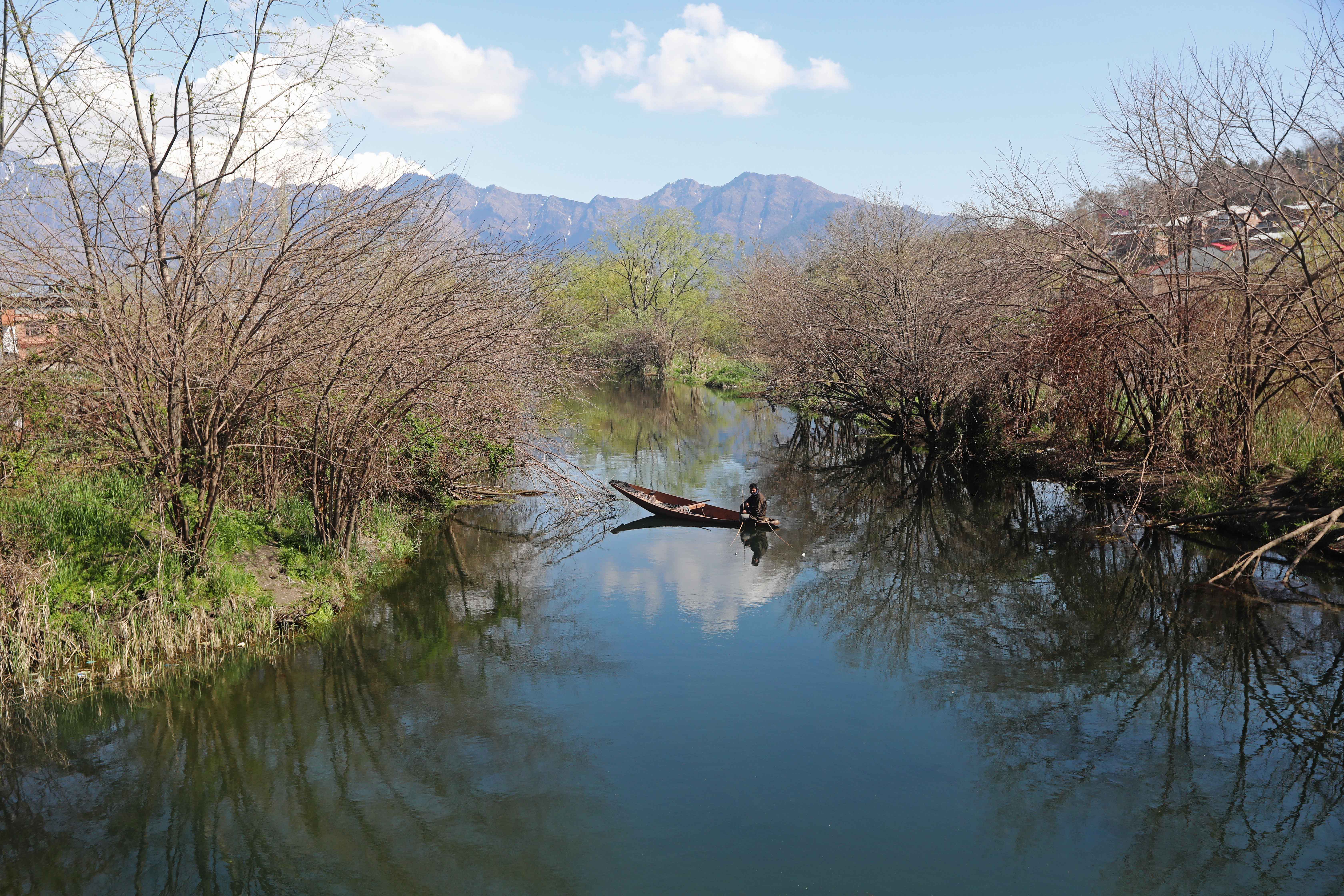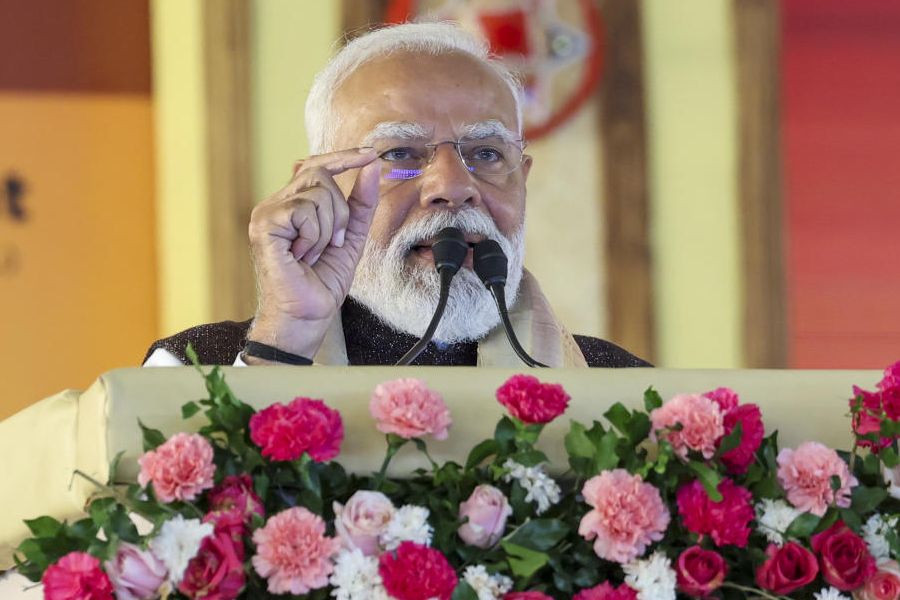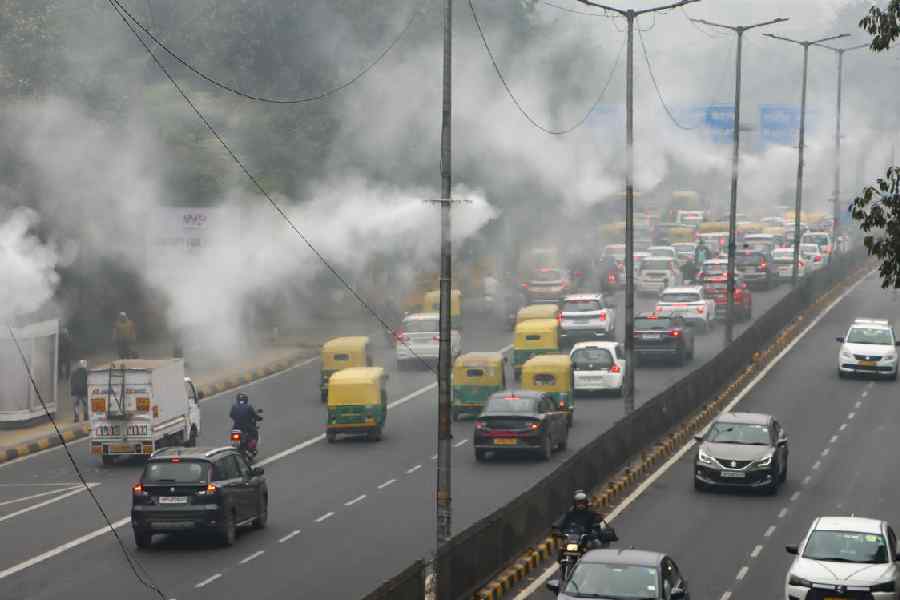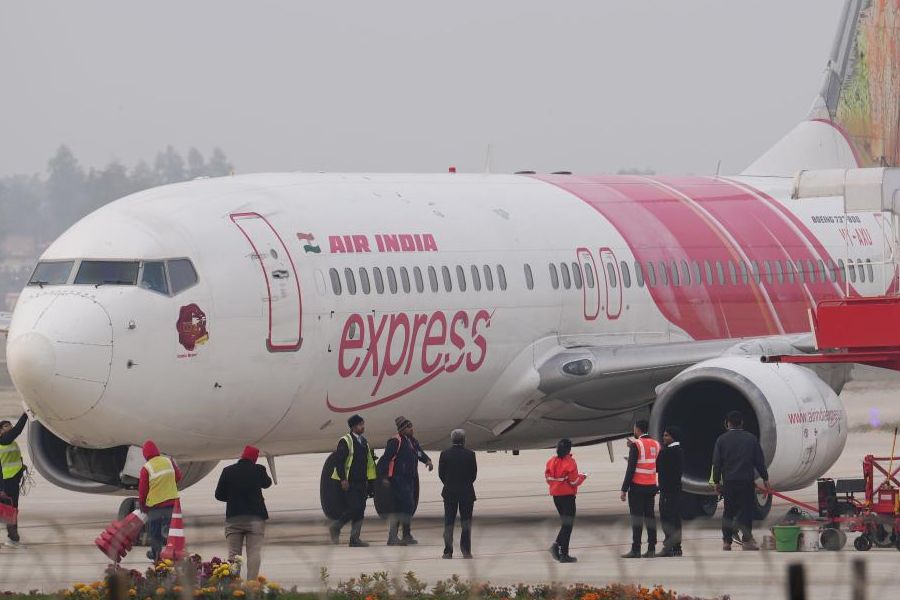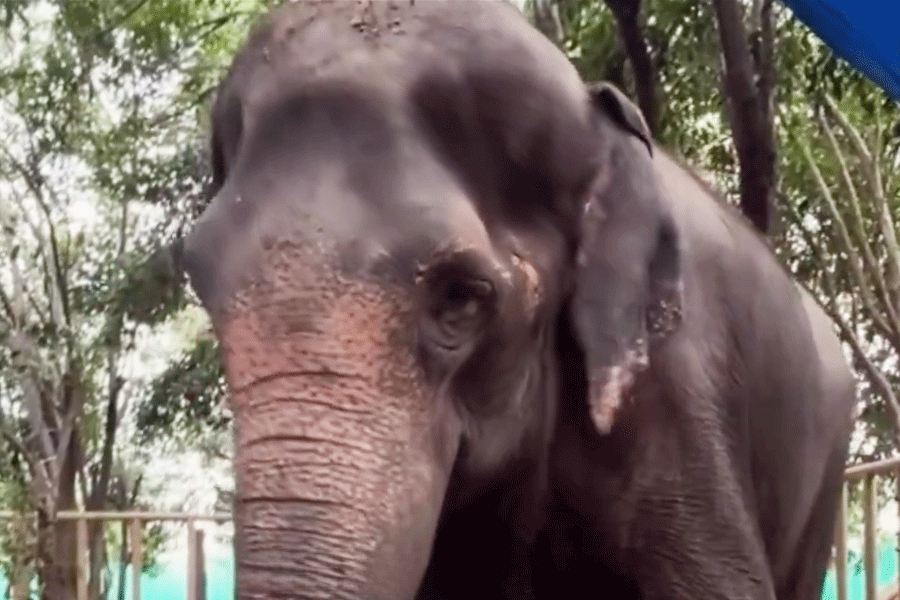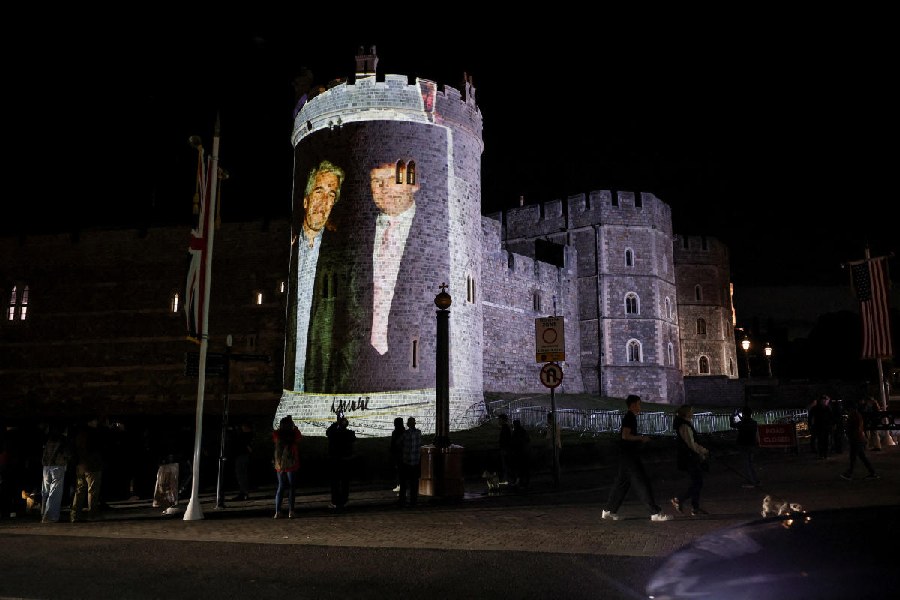Life in Kashmir feels like one long lockdown. Only this time it is being enforced to contain the spread of a deadly virus.
The roads are quieter, except for the sound of an ambulance or a mini truck carrying essentials. Markets are shut. Schools are closed. Hotels are empty. And there are no tourists.
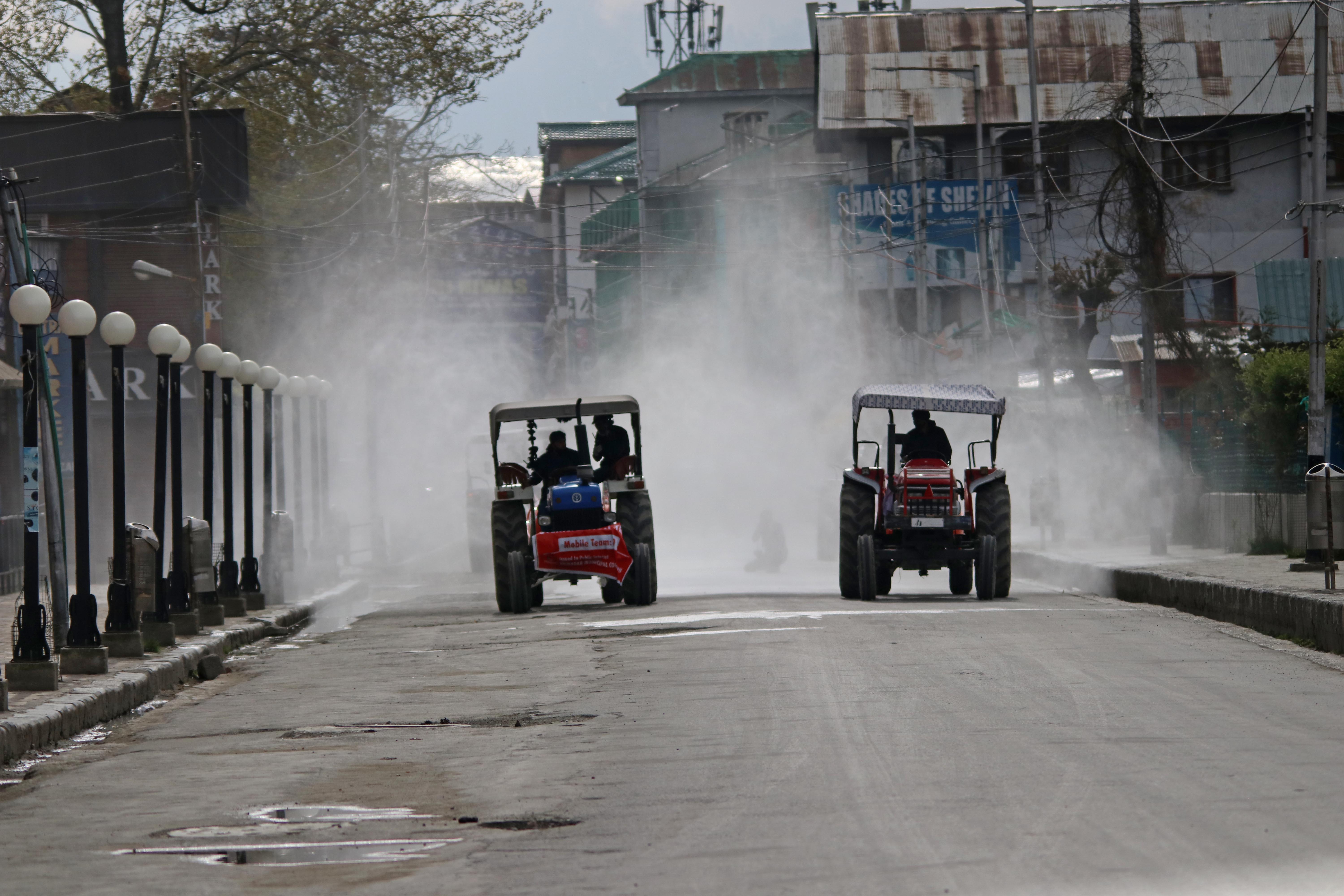
STAY SAFE: Municipal workers spray disinfectants in Lalchowk, Srinagar. Umer Asif
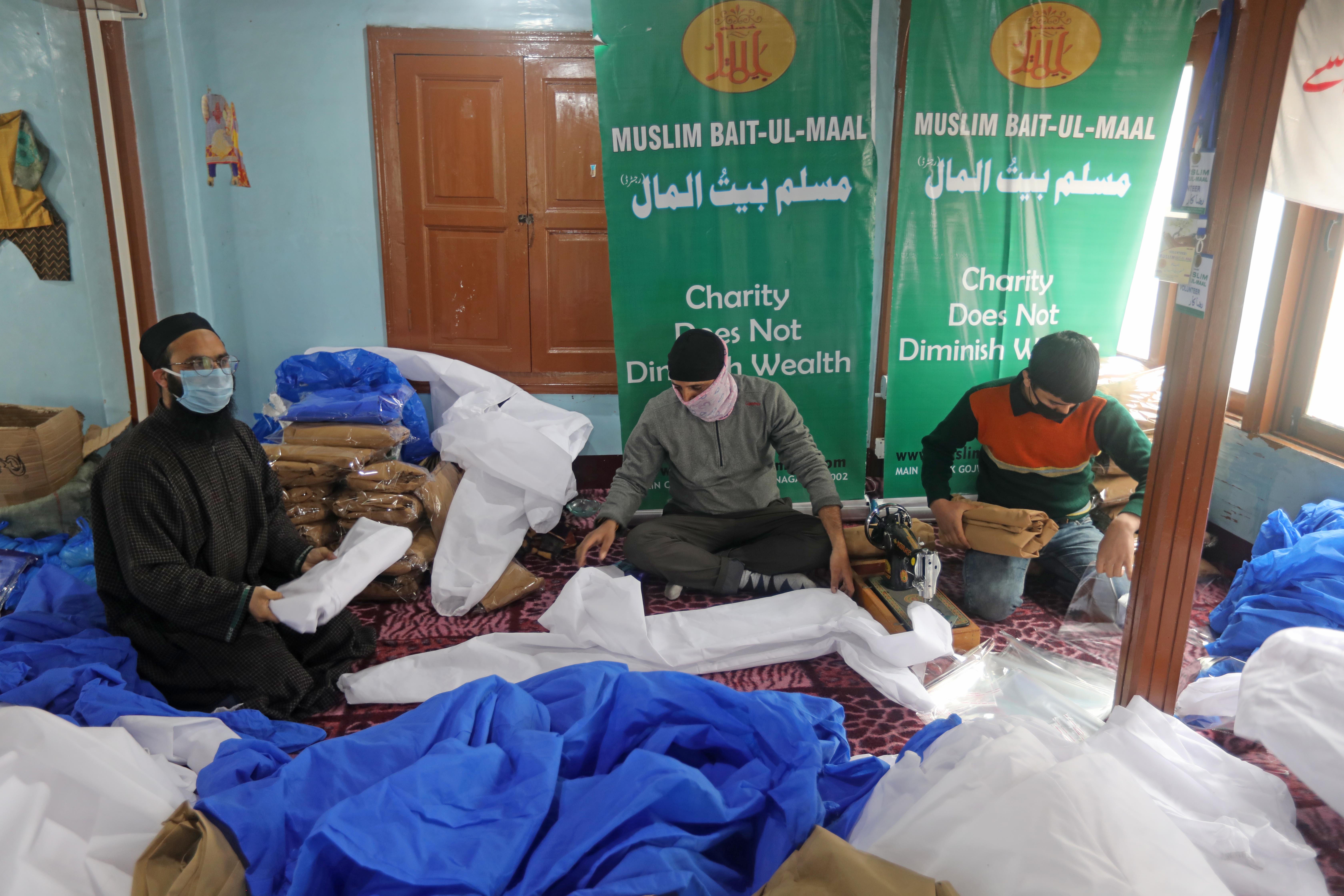
HELPING OUT: In Nowhatta old city, a group of volunteers makes masks and protective suits that are to be distributed among health workers. Umer Asif
Suhail Naqshbandi, a cartoonist and artist, has more time to do what he always wanted to. “I have started work on a few personal creative projects. I hope we can survive this lockdown as well… and live to tell the tale.”
Muzaffar Karim, a university lecturer, says the deserted landscape he sees from his window is not unfamiliar to Kashmiris. “Earlier we were forced to stay indoors like helpless creatures with no sense of free will. Now, for the very first time, one is an agency of free will – observing self-quarantine for the greater good of society,” he says.
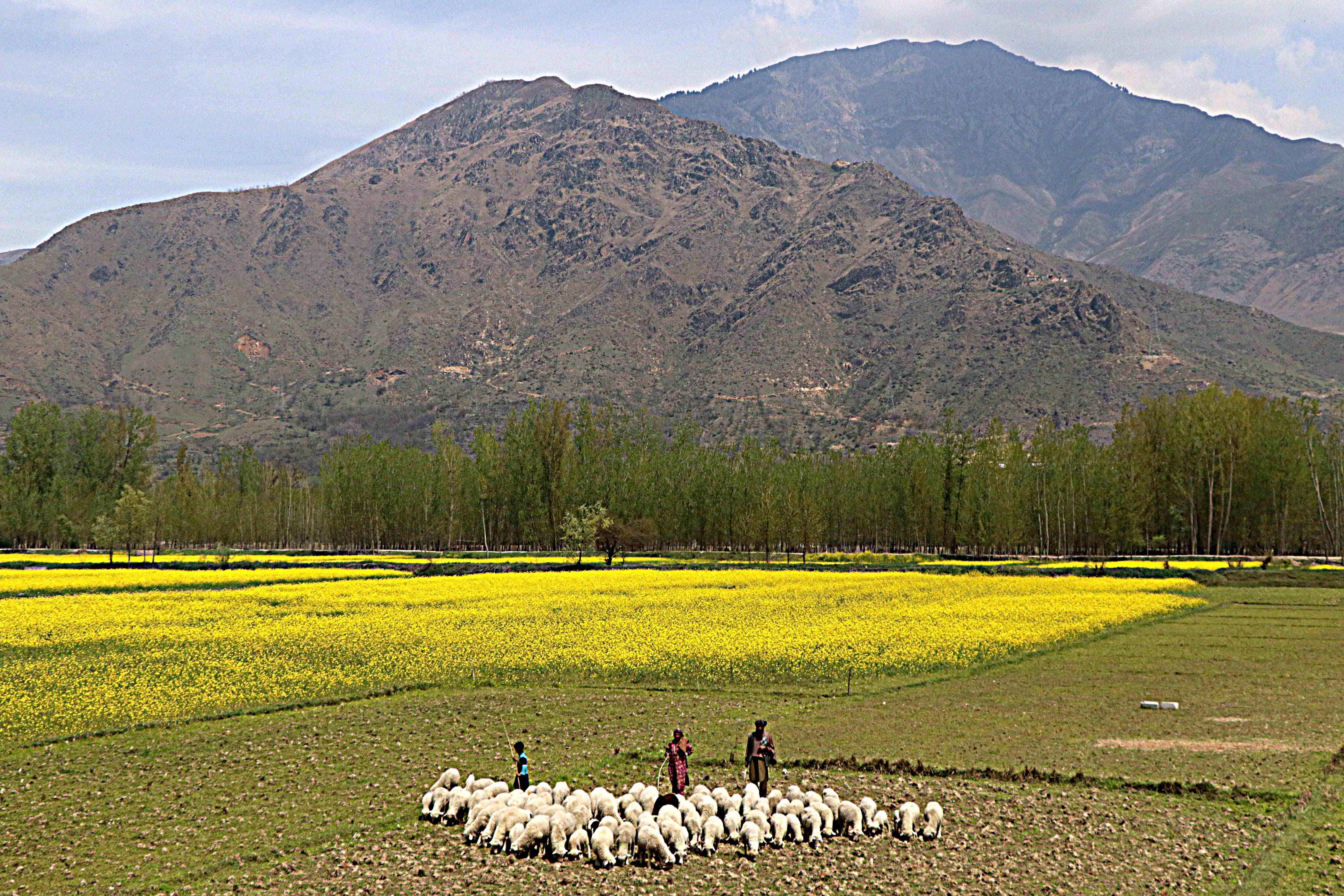
MORNING HAS BROKEN: Nomadic Gujjar tribals lead a herd of sheep on a mustard field in Pulwama district during the lockdown. Umer Asif
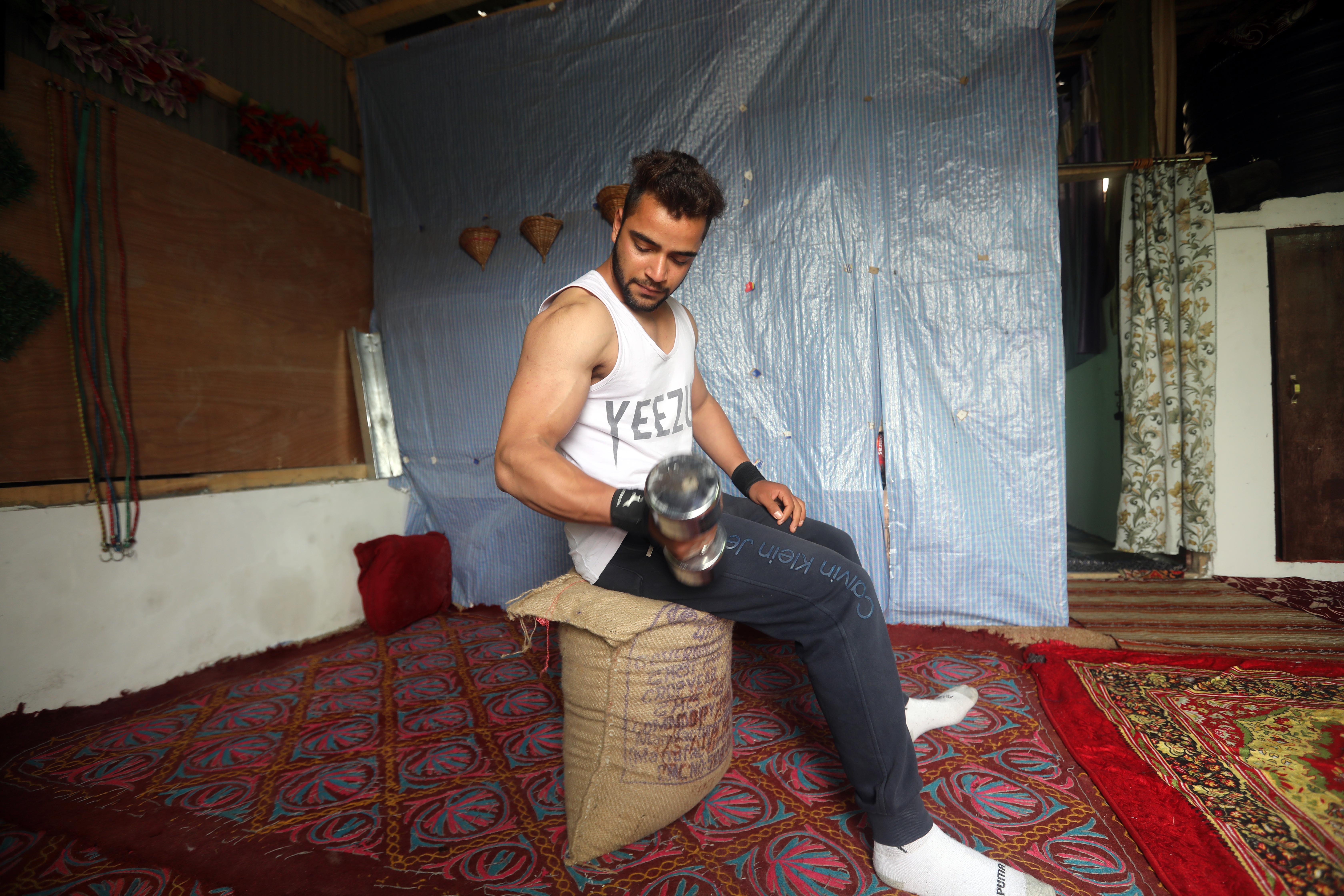
GOOD HEALTH: A young man exercises in a room he has converted into a gym at his home in Battamaloo, Srinagar. Umer Asif
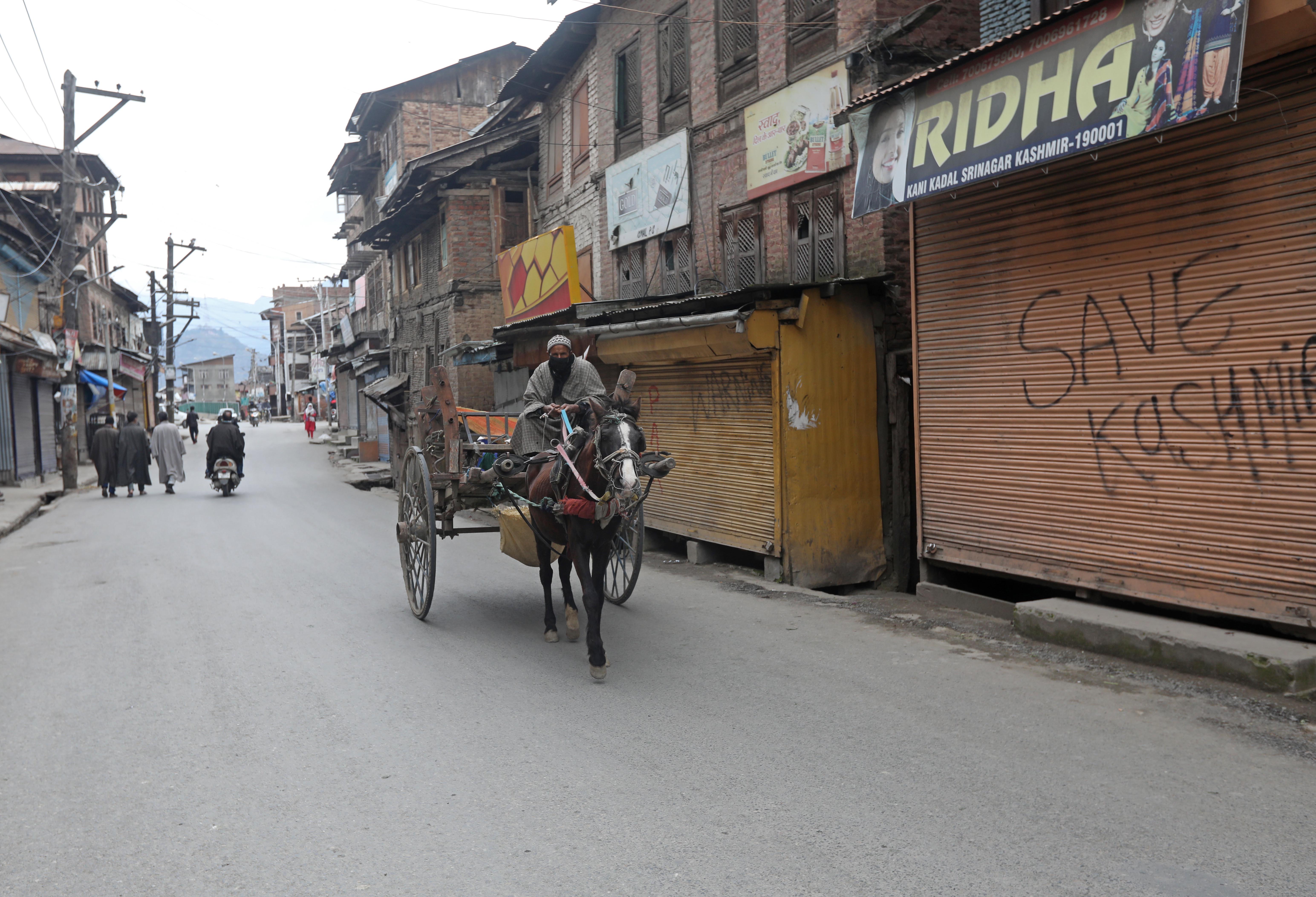
ESSENTIAL DELIVERY: A cart supplying milk in locked down area of Kani Kadal, Srinagar. Umer Asif
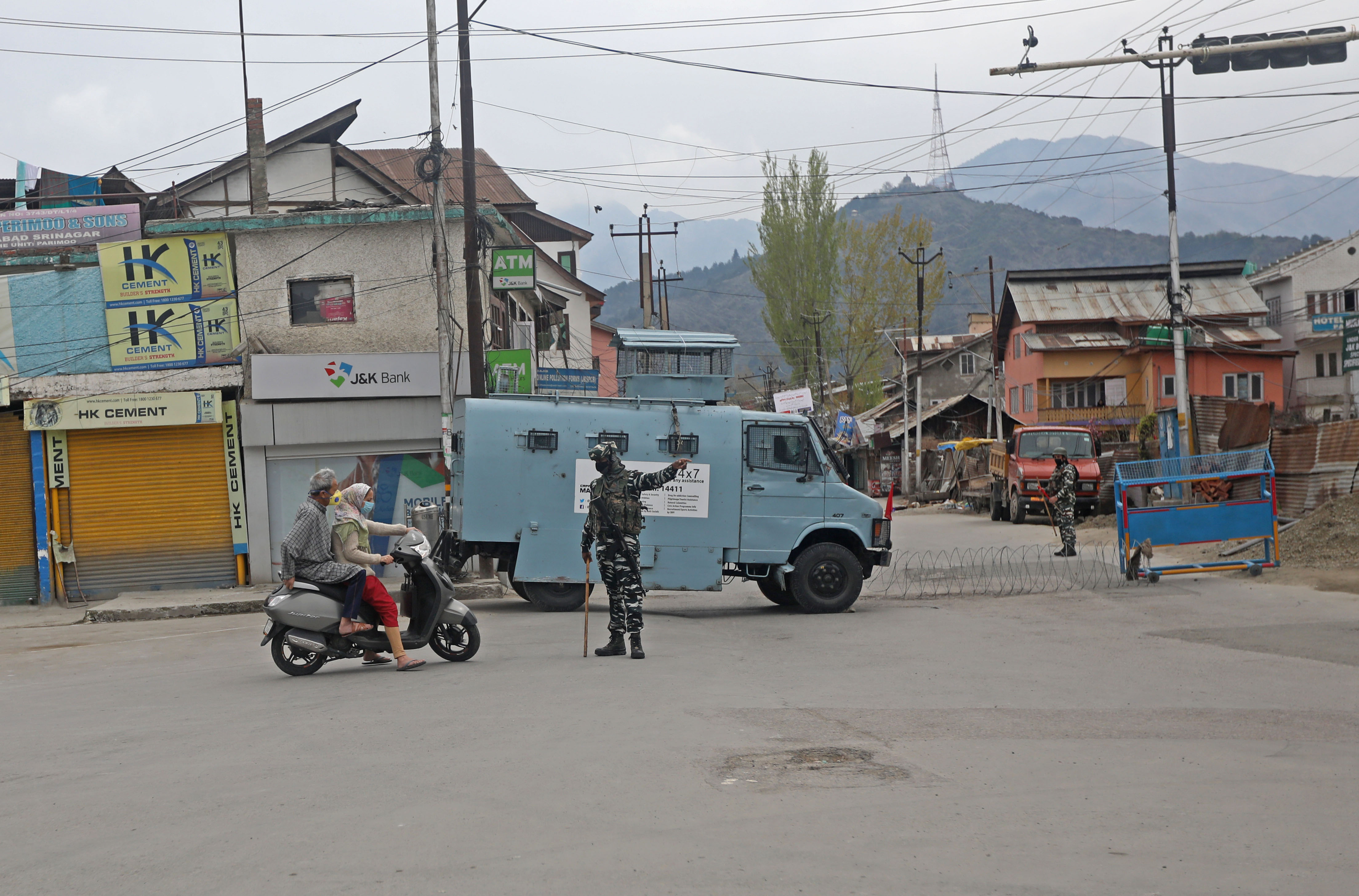
GO BACK: A CRPF man turns away a woman and her companion on a scooty at Nowpora Khayam, Srinagar. Umer Asif
A government school teacher from south Kashmir is thinking of his students who haven’t had classes since August 5 last year following the lockdown imposed after the revocation of Article 370. This year, even before the new academic session could begin, another lockdown has again confined them to their homes.
“Teachers are trying to reach students through digital means, a la Zoom, Skype, WhatsApp, Google Classroom, etc. But the absence of 4G internet, the struggle for us and our students seems unending,” he says.
On the outskirts of Srinagar city, there is this fruit seller who says he can ply his cart for a few hours only. For if there is a crowd milling around, the police will drive him away.
But he can’t afford to sit around. He is worried about being able to make enough for his family. “I hope things get back to normal soon. We have suffered enough from previous lockdowns,” he said.
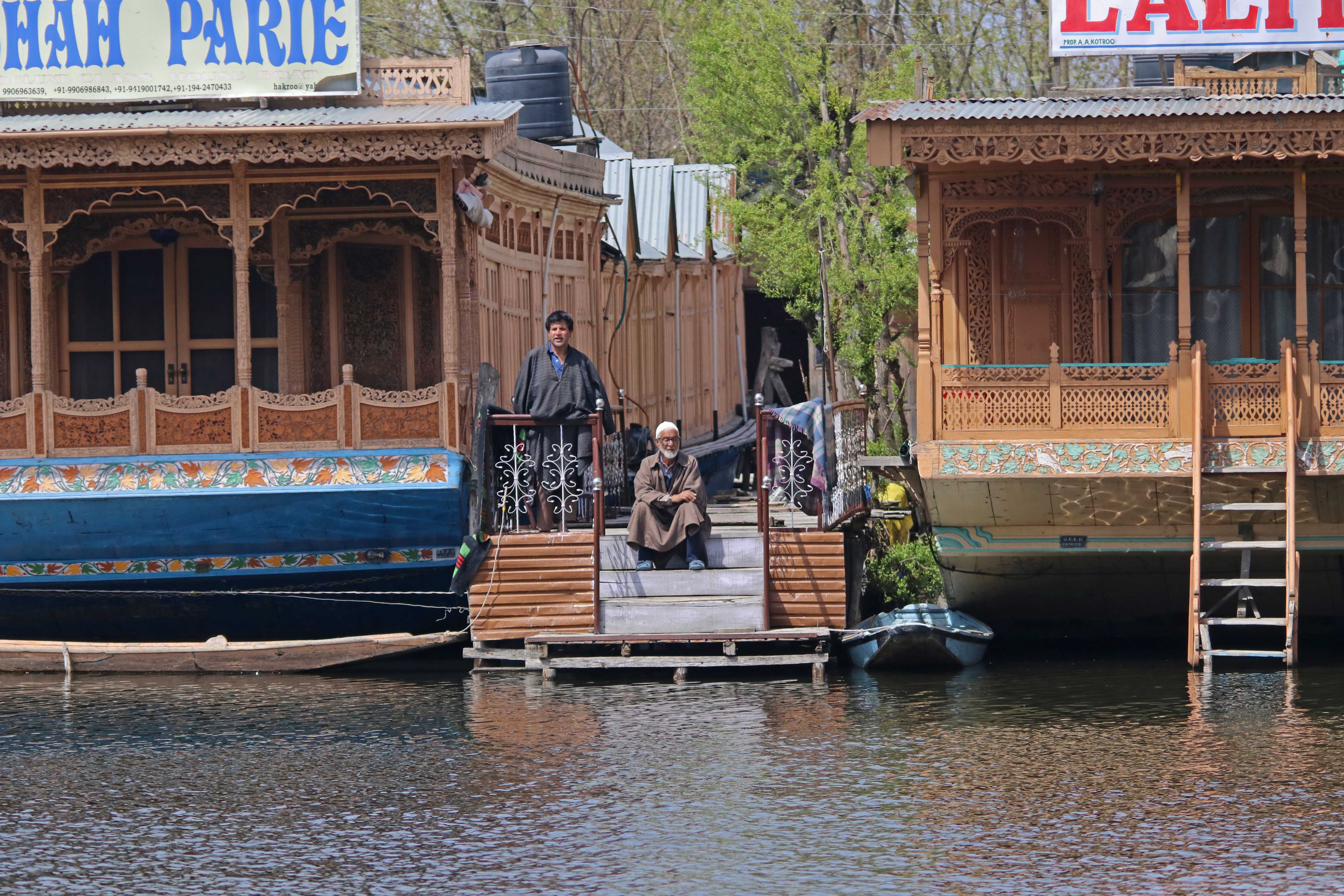
EMPTY NEST: An elderly man sits at the entrance of a houseboat in Dal Lake, Srinagar. Umer Asif
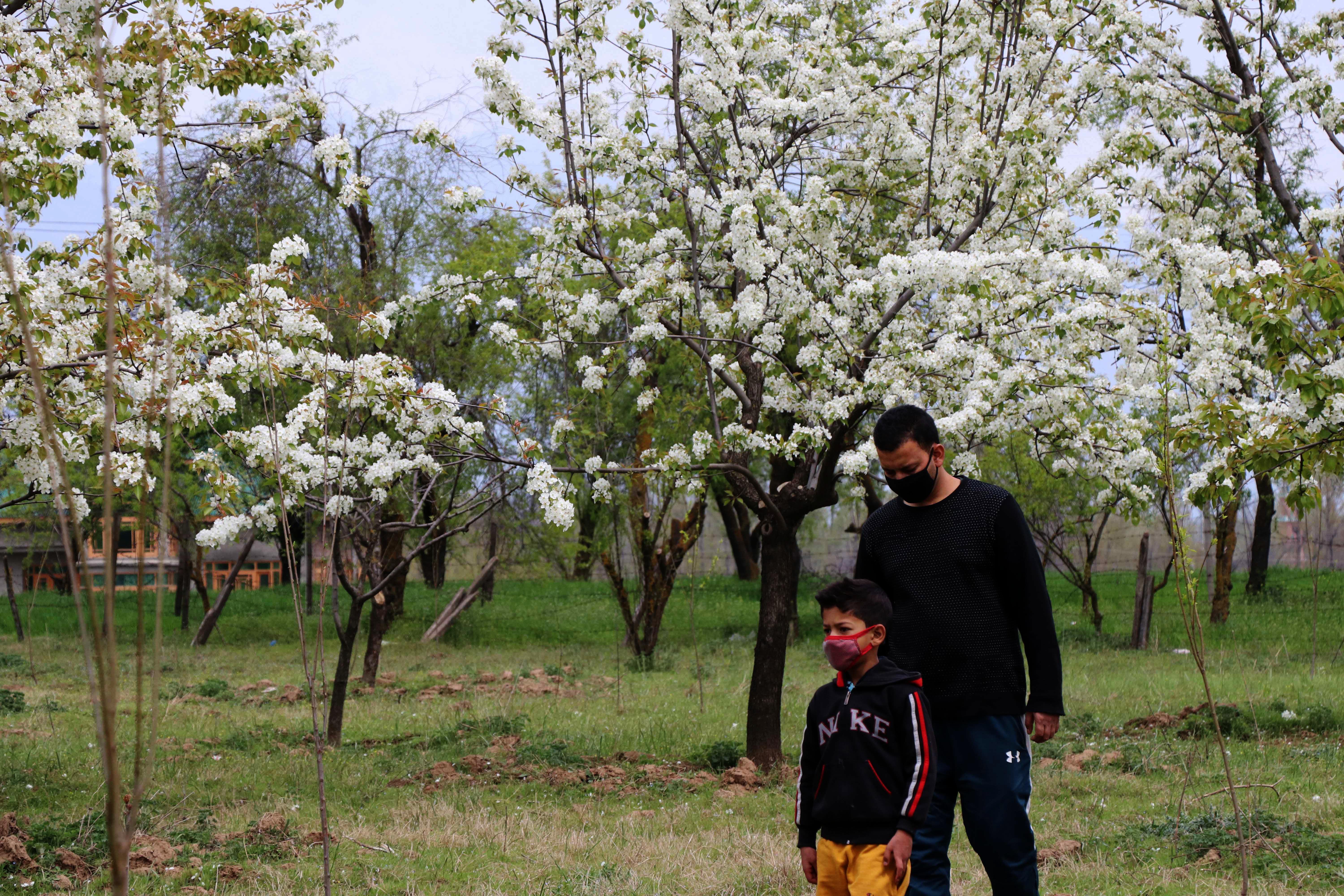
TREES IN BLOOM: A man and a boy in masks walk past a pear orchard in New Khanda, in south Kashmir's Pulwama district. Umer Asif
He misses his students. But Karim is happy that more and more young people are reading, falling back on writers and thinkers who have been in similar situations.
“Boccaccio’s The Decameron, Albert Camus’ The Plague and Gabriel Garcia Marquez’s Love in the Time of Cholera are providing new perspectives. There are many movies, documentaries and video-essays that one wants to share with students but limited 2G internet services in Kashmir cripple this exploration and sharing of knowledge,” he rues.
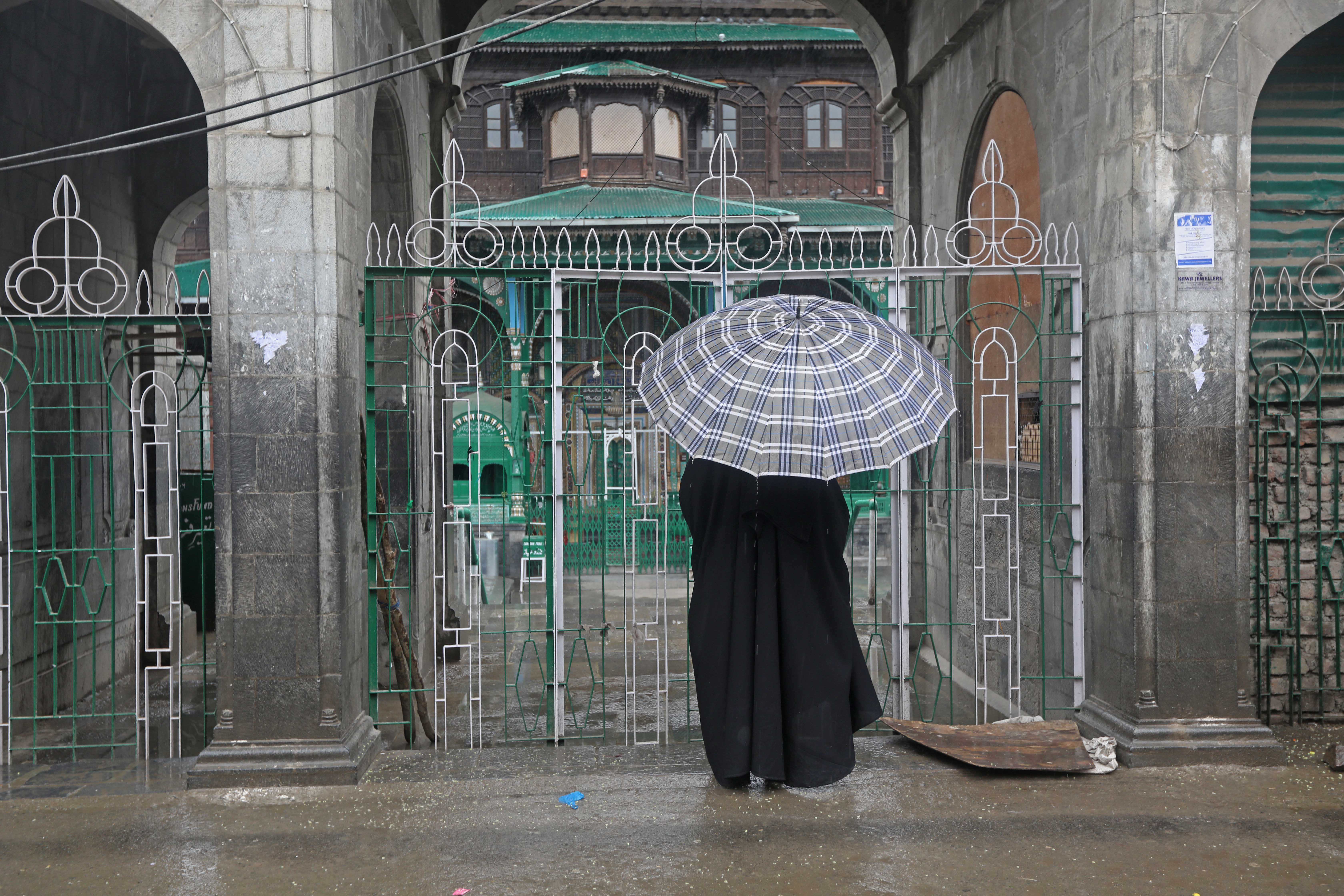
IN PRAYER: A woman stands outside a locked shrine (Khanqah-e-Moula) in the old city, Srinagar. Umer Asif
It’s not all gloomy though. The air is purer. Far off mountains, clearly visible, appear nearer as if protecting the valley. The sky has never been so blue. Trees are in bloom. Flowers of joy are everywhere. Hope floats.
As people stay away from each other, they are also trying to come together and help each other. Mohalla committees, volunteers and NGOs are collaborating to ensure that the needy get timely food and medicine. Some are making and delivering masks and protective gear to doctors, nurses and healthcare workers in hospitals.
Little of this is on social media. Not everyone wants to show off.
This too shall pass, they all hope.
Bushra Punjabi, a research scholar of Jamia Millia Islamia, New Delhi, managed to reach home in Kashmir days before the lockdown. She is no stranger to lockdowns in the valley. But this time it’s different.
“I’m seeing sanitizers, masks, and gloves everywhere. There is no shaking of hands. Guests are handed with sanitizers. Vitamin C tablets, black seeds, Kahwa have become an indispensable part of our routine diet,” she says.

